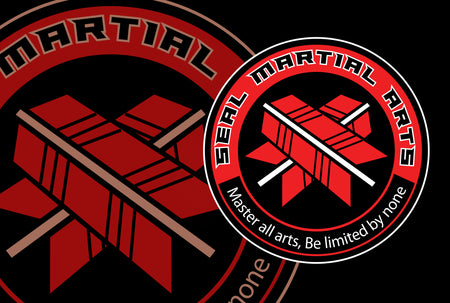
History and Origins of the Kama in Ninjutsu and Japanese Martial Arts
The Kama, a weapon synonymous with the art of Ninjutsu and Japanese martial arts, carries a rich history and deep cultural significance. Originating as a humble farming tool, the Kama evolved over centuries to become a lethal instrument of combat in the hands of skilled warriors. In this exploration, we delve into the captivating history and origins of the Kama in Ninjutsu and Japanese martial arts.
The origins of the Kama can be traced back to ancient Japan, where it served as a simple agricultural implement used for reaping crops such as rice and wheat. Its design consisted of a metal blade attached to a wooden or metal handle, making it ideal for cutting and harvesting vegetation. Farmers throughout Japan relied on the Kama for their livelihood, unaware of its future transformation into a weapon of warfare.
As feudal Japan entered an era of constant conflict and warfare, farmers found themselves thrust into battles to defend their lands and communities. Faced with the need for self defence, resourceful farmers repurposed their agricultural tools, including the Kama, as makeshift weapons. With its curved blade and sturdy construction, the Kama proved to be effective for both cutting crops and fending off attackers.
During the tumultuous Sengoku period (1467-1603), the Ninja or Shinobi, emerged as masters of espionage, sabotage, and unconventional warfare. As clandestine operatives, Ninjas relied on stealth, deception, and a diverse array of weapons to accomplish their objectives. The Kama, with its compact size and versatile capabilities, became a staple tool in the Ninja's arsenal.
Ninjas adapted the Kama for use in both offensive and defensive maneuvers, incorporating it into their training regimens alongside other traditional weapons such as the Katana and Shuriken. The curved blade of the Kama allowed Ninjas to execute swift strikes, disarm opponents, and even scale walls with ease, making it a valuable asset in their covert operations.
Beyond its practical utility in combat, the Kama holds deep symbolism and cultural significance in Japanese martial arts. As a weapon derived from the tools of the common farmer, the Kama embodies the resilience, resourcefulness and adaptability of the Japanese people. Its association with Ninjutsu further elevates its status, symbolizing the shadowy world of espionage and intrigue inhabited by the Ninja warriors.
In modern times, the Kama remains an integral part of Japanese martial arts, revered for its historical legacy and practical effectiveness. Martial artists continue to study and master the techniques of the Kama, paying homage to its humble origins while unlocking its potential as a formidable weapon in combat.
The journey of the Kama from a humble farming tool to a revered weapon of Ninjutsu and Japanese martial arts is a testament to the ingenuity and resilience of the Japanese people. As we reflect on its rich history and cultural significance, we gain a deeper appreciation for the profound impact of this seemingly simple implement. Whether wielded by a farmer tending to crops or a Ninja navigating the shadows, the Kama embodies the spirit of tradition, adaptation, and martial excellence that define Japanese martial arts.
The origins of the Kama can be traced back to ancient Japan, where it served as a simple agricultural implement used for reaping crops such as rice and wheat. Its design consisted of a metal blade attached to a wooden or metal handle, making it ideal for cutting and harvesting vegetation. Farmers throughout Japan relied on the Kama for their livelihood, unaware of its future transformation into a weapon of warfare.
As feudal Japan entered an era of constant conflict and warfare, farmers found themselves thrust into battles to defend their lands and communities. Faced with the need for self defence, resourceful farmers repurposed their agricultural tools, including the Kama, as makeshift weapons. With its curved blade and sturdy construction, the Kama proved to be effective for both cutting crops and fending off attackers.
During the tumultuous Sengoku period (1467-1603), the Ninja or Shinobi, emerged as masters of espionage, sabotage, and unconventional warfare. As clandestine operatives, Ninjas relied on stealth, deception, and a diverse array of weapons to accomplish their objectives. The Kama, with its compact size and versatile capabilities, became a staple tool in the Ninja's arsenal.
Ninjas adapted the Kama for use in both offensive and defensive maneuvers, incorporating it into their training regimens alongside other traditional weapons such as the Katana and Shuriken. The curved blade of the Kama allowed Ninjas to execute swift strikes, disarm opponents, and even scale walls with ease, making it a valuable asset in their covert operations.
Beyond its practical utility in combat, the Kama holds deep symbolism and cultural significance in Japanese martial arts. As a weapon derived from the tools of the common farmer, the Kama embodies the resilience, resourcefulness and adaptability of the Japanese people. Its association with Ninjutsu further elevates its status, symbolizing the shadowy world of espionage and intrigue inhabited by the Ninja warriors.
In modern times, the Kama remains an integral part of Japanese martial arts, revered for its historical legacy and practical effectiveness. Martial artists continue to study and master the techniques of the Kama, paying homage to its humble origins while unlocking its potential as a formidable weapon in combat.
The journey of the Kama from a humble farming tool to a revered weapon of Ninjutsu and Japanese martial arts is a testament to the ingenuity and resilience of the Japanese people. As we reflect on its rich history and cultural significance, we gain a deeper appreciation for the profound impact of this seemingly simple implement. Whether wielded by a farmer tending to crops or a Ninja navigating the shadows, the Kama embodies the spirit of tradition, adaptation, and martial excellence that define Japanese martial arts.
